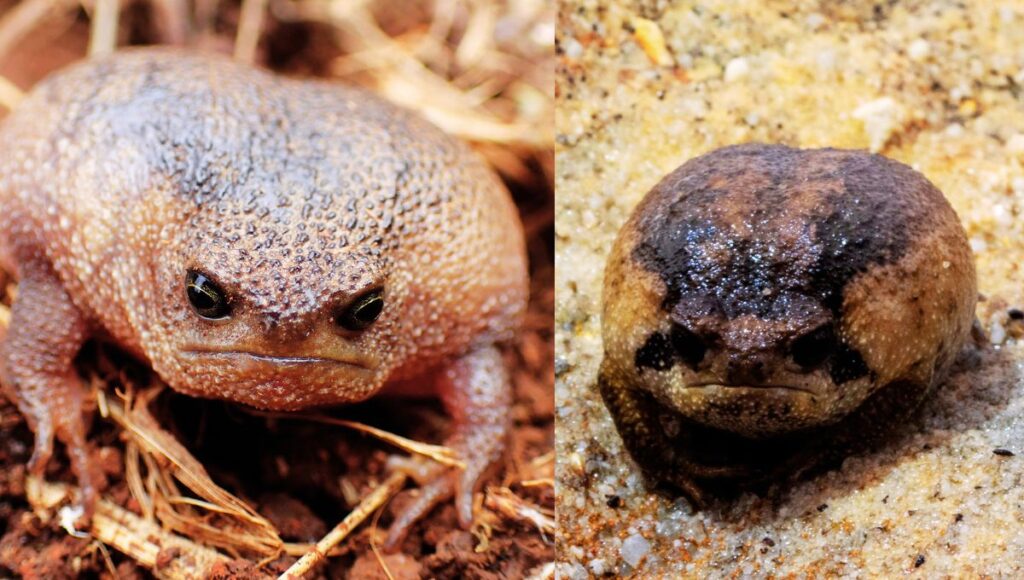Obtain Your Hands on a Rain Frog for Sale: Experience the Joy of Distinct Animal Ownership!
Obtain Your Hands on a Rain Frog for Sale: Experience the Joy of Distinct Animal Ownership!
Blog Article
The Finest Reptile Enclosures: Exactly How to Produce the Ideal Environment
Developing the best environment for reptiles is not just regarding putting them in a storage tank or unit; it entails a thoughtful consideration of numerous factors that add to their overall well-being. From the size of the unit to the kind of substratum made use of, every component plays a vital duty in giving an atmosphere where your reptile can prosper. By comprehending the certain demands of your reptile varieties and applying the appropriate environment configuration, you can ensure their health and wellness and happiness in captivity.
Choosing the Right Unit Dimension
When choosing an unit dimension for reptiles, it is important to consider their natural actions and room needs to guarantee their wellness and health and wellness. Different reptile varieties have differing requirements when it pertains to habitat room. Arboreal species like chameleons or tree serpents need vertical area for climbing and setting down, while earthbound types such as bearded dragons or leopard geckos require even more floor room for checking out and thermoregulation. Marine turtles like red-eared sliders demand rooms with both water and acreage for swimming and basking.
A general policy of thumb is to give sufficient space for the reptile to show all-natural behaviors, such as basking, hiding, climbing up, and foraging. By very carefully thinking about the details needs of the reptile types in inquiry, proprietors can develop a suitable and enriching habitat that promotes total well-being and encourages natural behaviors.
Setting Up Proper Burner
To guarantee the well-being and health and wellness of reptiles in their enclosures, it is vital to carefully set up proper burner. Reptiles are ectothermic animals, suggesting they count on exterior warm resources to control their body temperature level. When establishing up home heating aspects in a reptile room, it is important to think about the specific temperature demands of the species you are caring for. Different reptiles have varying temperature level requires based on their natural environment, so it is important to research and recognize these needs.
One effective and usual heating element for reptile rooms is a heat lamp or ceramic warmth emitter. These warm resources can be utilized to develop a temperature level slope within the enclosure, enabling reptiles to move in between warmer and cooler areas as required. Furthermore, under-tank heating pads or warmth mats can be made use of to offer stubborn belly heat, which is particularly helpful for reptiles that call for added warmth to help in food digestion.
Keeping track of the temperature level within the unit using a thermometer is vital to guarantee that the heating components are preserving the ideal temperature variety for your reptile. Consistently check and adjust the burner as required to develop a comfy and healthy and balanced setting for your flaky friend.
Selecting Appropriate Illumination Fixtures

Providing the Suitable Substrate
Picking the ideal substratum is important for creating a comfortable and appropriate environment for reptiles in their enclosures. Some reptiles, such as desert-dwelling varieties like bearded dragons, grow on substratums like calcium sand or reptile carpeting, while others, like sphere pythons, like coconut husk or aspen bed linen to maintain moisture degrees.
Additionally, the dimension of the reptile must additionally influence your selection of substratum, as hatchlings may call for a better material to stop consumption. Avoid substrates that can trigger impaction, such as loosened substrates like sand or gravel, specifically for reptiles known to consume their bed linen. Regularly cleansing and replacing the substratum is crucial to make certain a tidy and hygienic environment for your reptile. By picking the optimal substratum, you can contribute to the total health and wellness and well-being of your flaky companion.
Designing for Enrichment and Comfort
Thinking about the substrate's duty in providing a structure for all-natural actions and preserving an ideal environment, improving the reptile enclosure with appropriate designs is important for both enrichment and convenience. When decorating the enclosure, it is necessary to take into consideration the reptile's species-specific requirements and habits to develop a room that promotes psychological and physical well-being. By navigate to this site integrating a variety of decorations that simulate the reptile's natural habitat, owners can ensure their animal's convenience and stimulate their all-natural instincts, eventually leading to a better and healthier reptile.
Final Thought

Creating the perfect environment for reptiles is not just regarding positioning them in a tank or room; it entails a thoughtful consideration of various variables that add to their general wellness.Picking the ideal substratum is vital for producing a ideal and comfy setting for reptiles in their rooms. Some reptiles, such as desert-dwelling species like bearded dragons, prosper on substratums like calcium sand or reptile carpeting, while others, like round pythons, favor coconut husk or aspen bed linen to keep humidity levels.
By including a selection Home Page of decors that simulate the reptile's all-natural environment, proprietors can ensure their pet dog's comfort and promote their all-natural reactions, inevitably leading to a happier and healthier reptile.
In final thought, producing the optimal environment for reptiles involves choosing the suitable room dimension, heating elements, lighting components, substratum, and decors.
Report this page